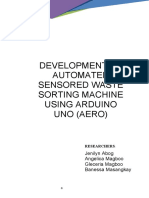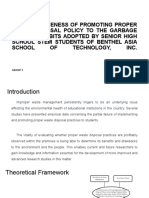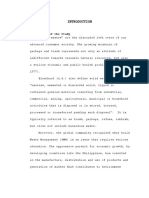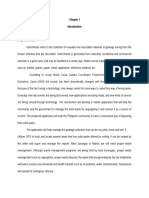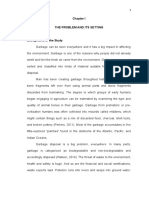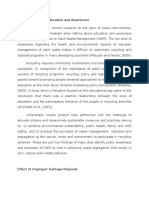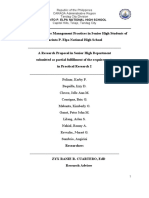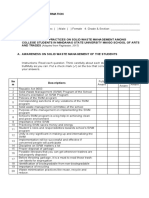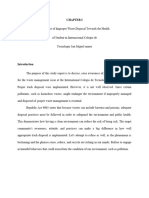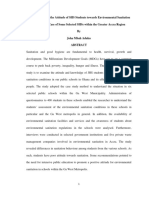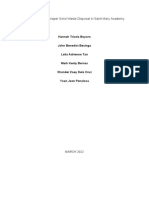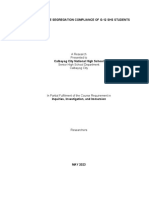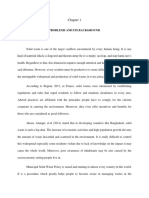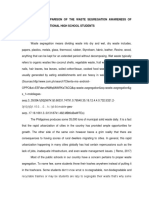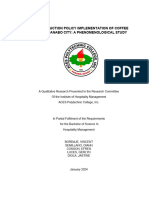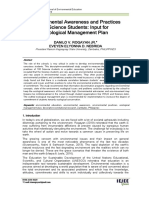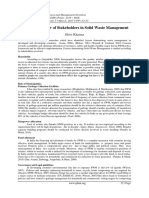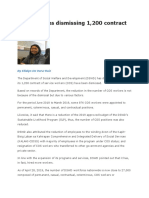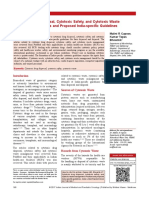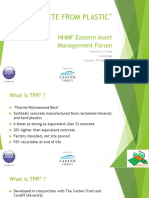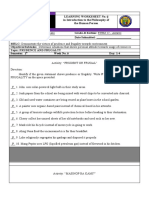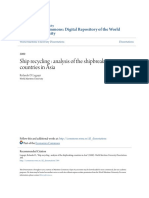0% found this document useful (0 votes)
294 views9 pagesChapter 2 Garbage Overloading
This chapter reviews related literature on waste management. It discusses studies that have investigated factors influencing waste separation intentions in Vietnam and the low level of waste management service in Indonesia. It also reviews literature on integrating waste prevention into local waste management. The review finds increasing interest in waste prevention but a lack of research on monitoring prevention measures and encouraging household waste reduction.
Uploaded by
Zeina GravadorCopyright
© © All Rights Reserved
We take content rights seriously. If you suspect this is your content, claim it here.
Available Formats
Download as DOCX, PDF, TXT or read online on Scribd
0% found this document useful (0 votes)
294 views9 pagesChapter 2 Garbage Overloading
This chapter reviews related literature on waste management. It discusses studies that have investigated factors influencing waste separation intentions in Vietnam and the low level of waste management service in Indonesia. It also reviews literature on integrating waste prevention into local waste management. The review finds increasing interest in waste prevention but a lack of research on monitoring prevention measures and encouraging household waste reduction.
Uploaded by
Zeina GravadorCopyright
© © All Rights Reserved
We take content rights seriously. If you suspect this is your content, claim it here.
Available Formats
Download as DOCX, PDF, TXT or read online on Scribd
/ 9
